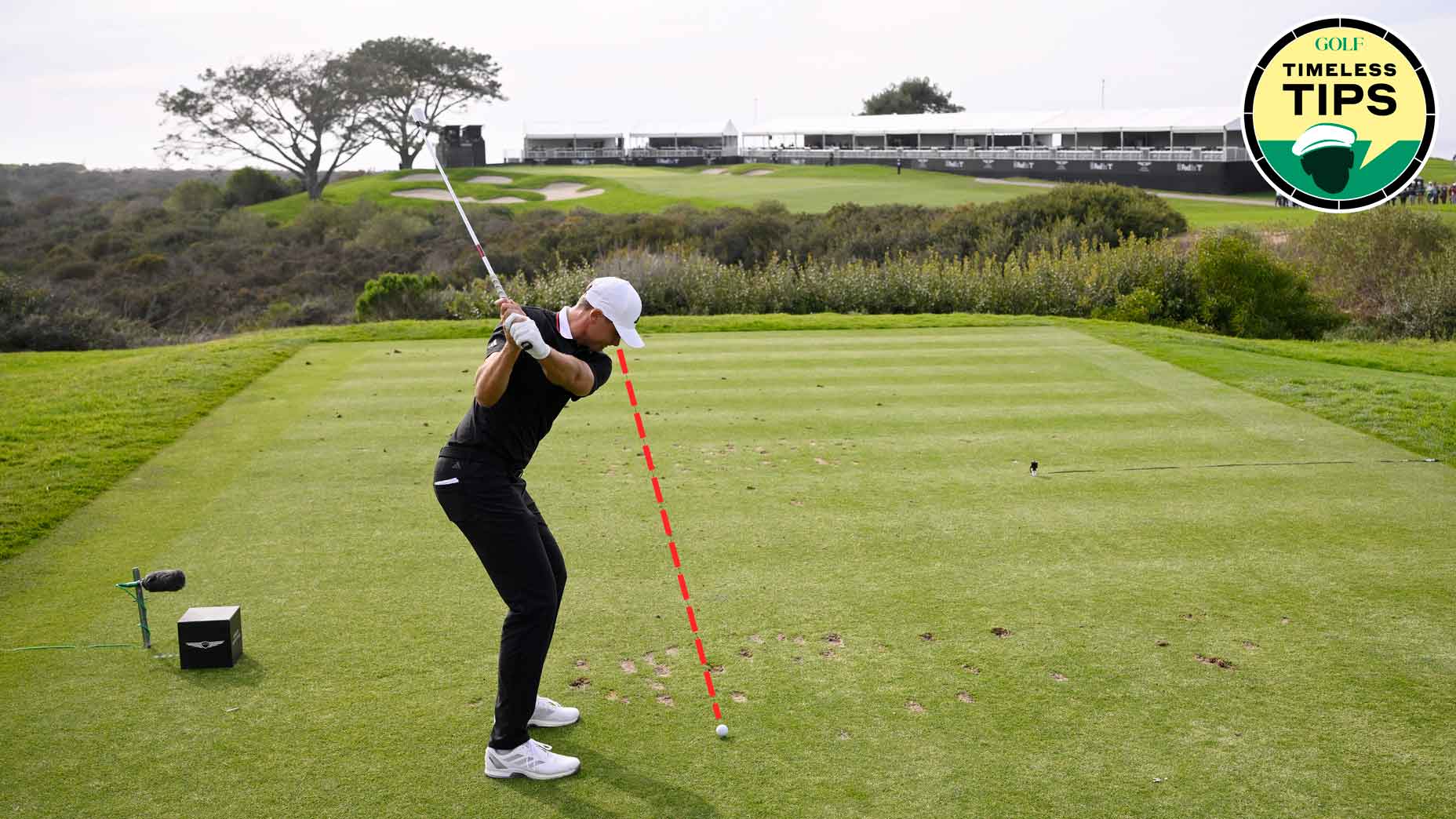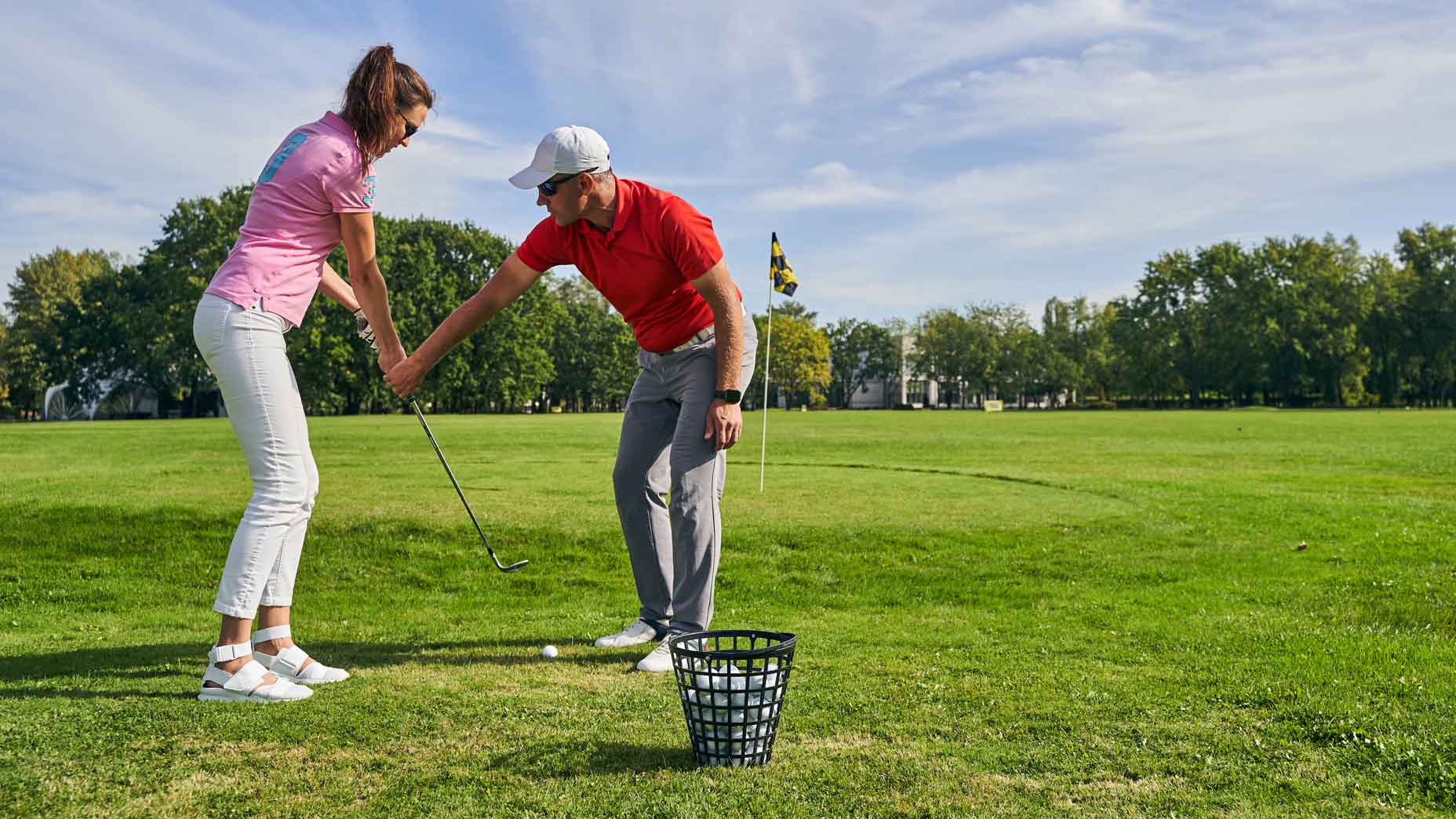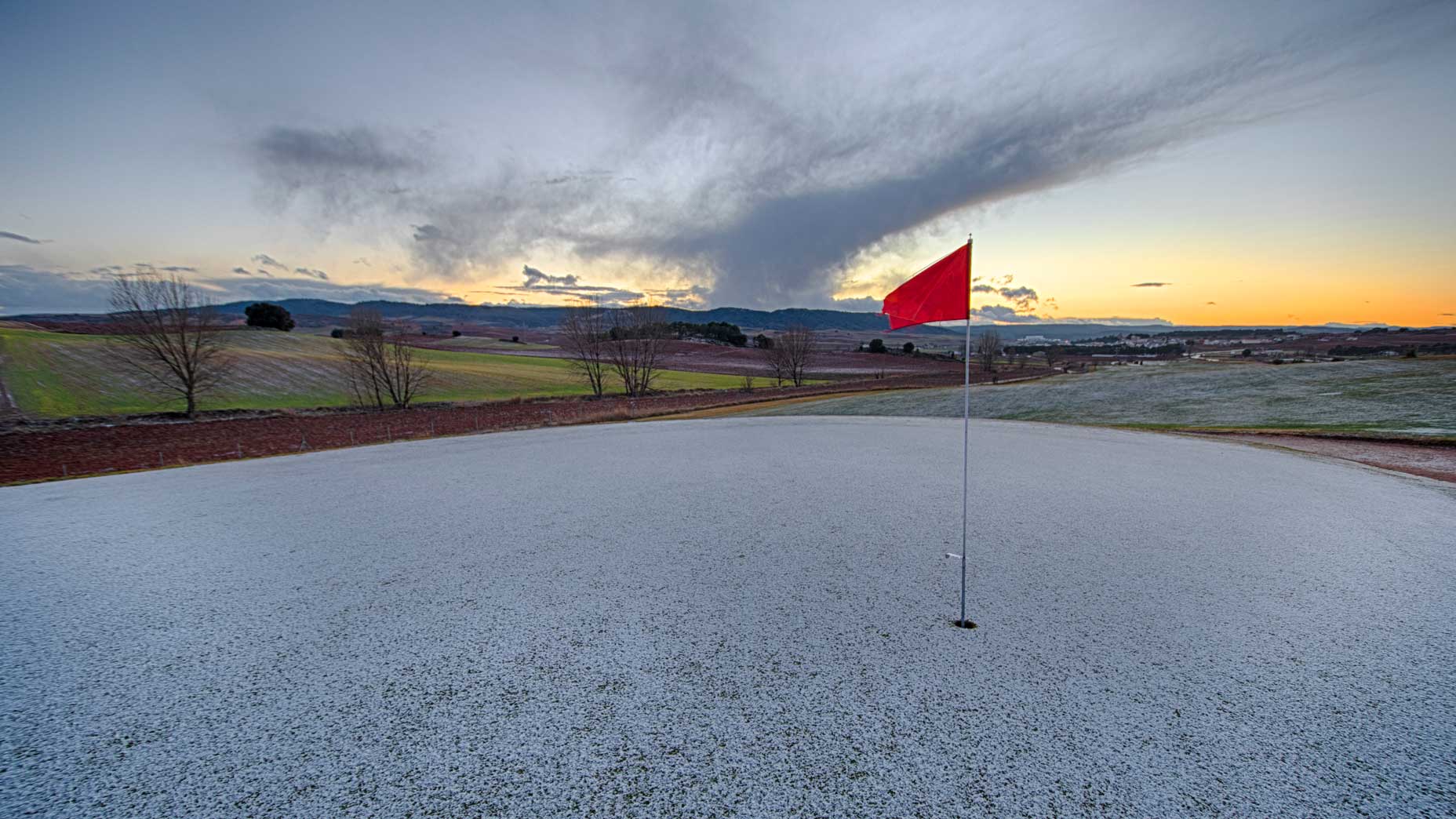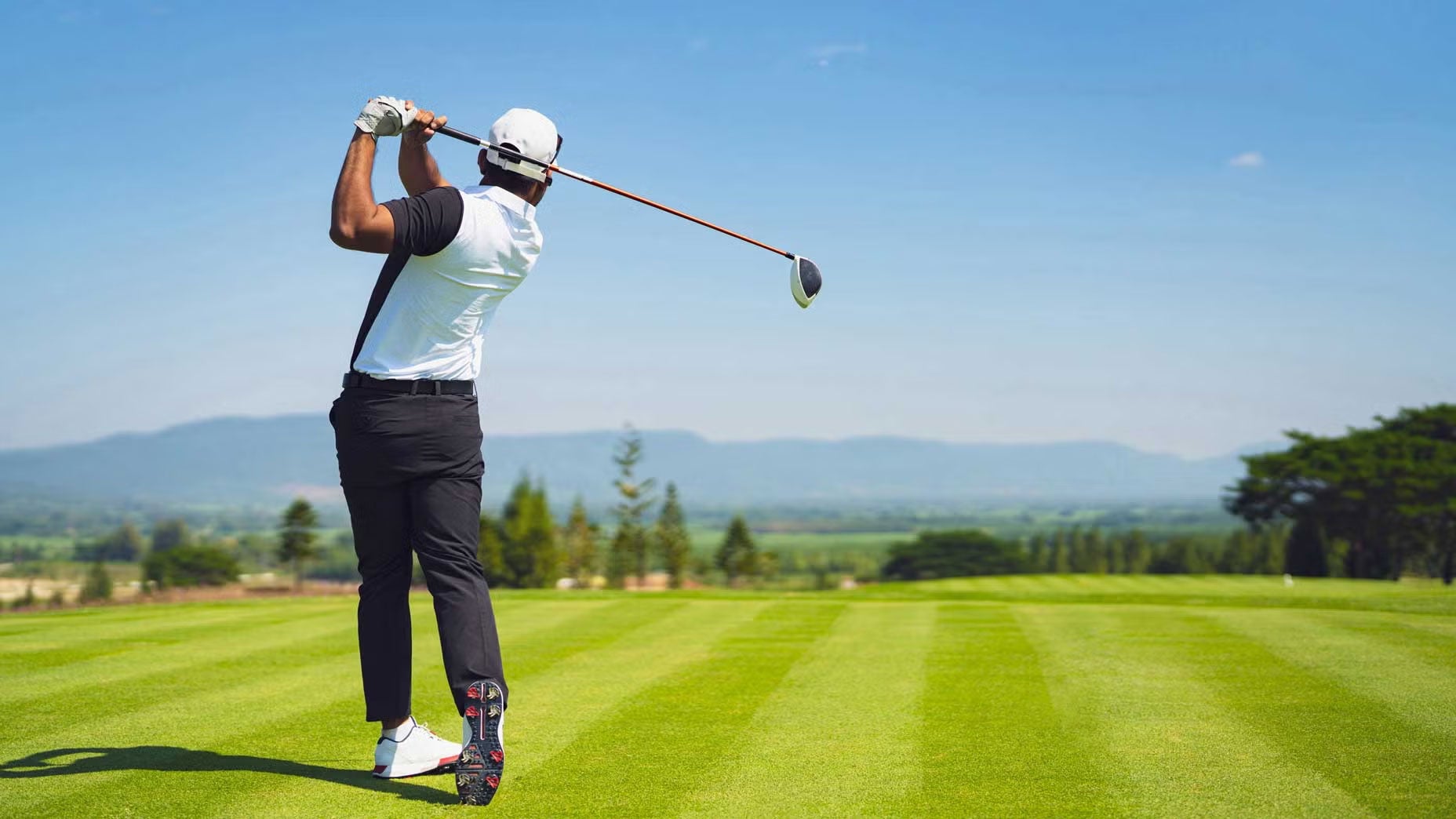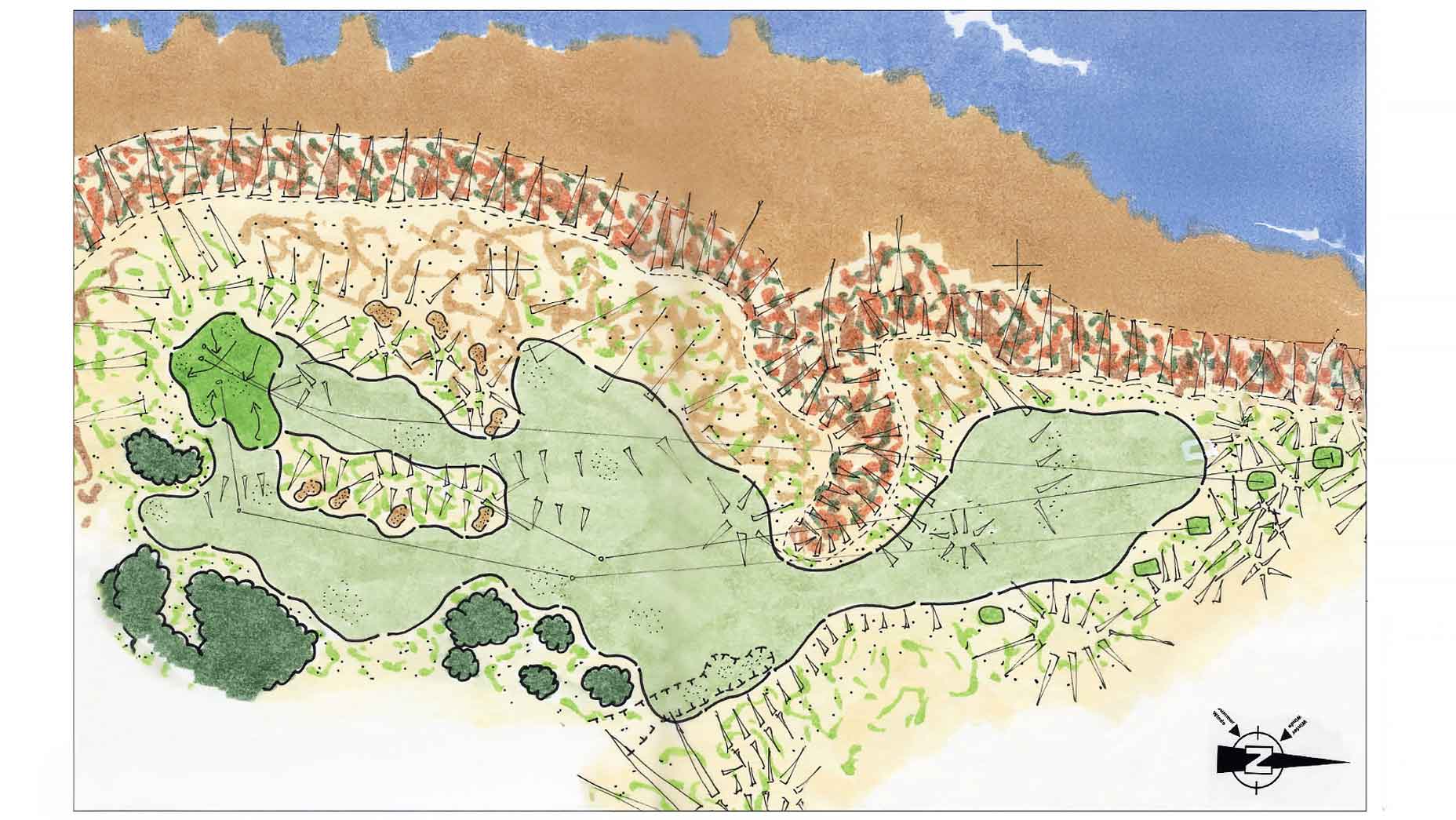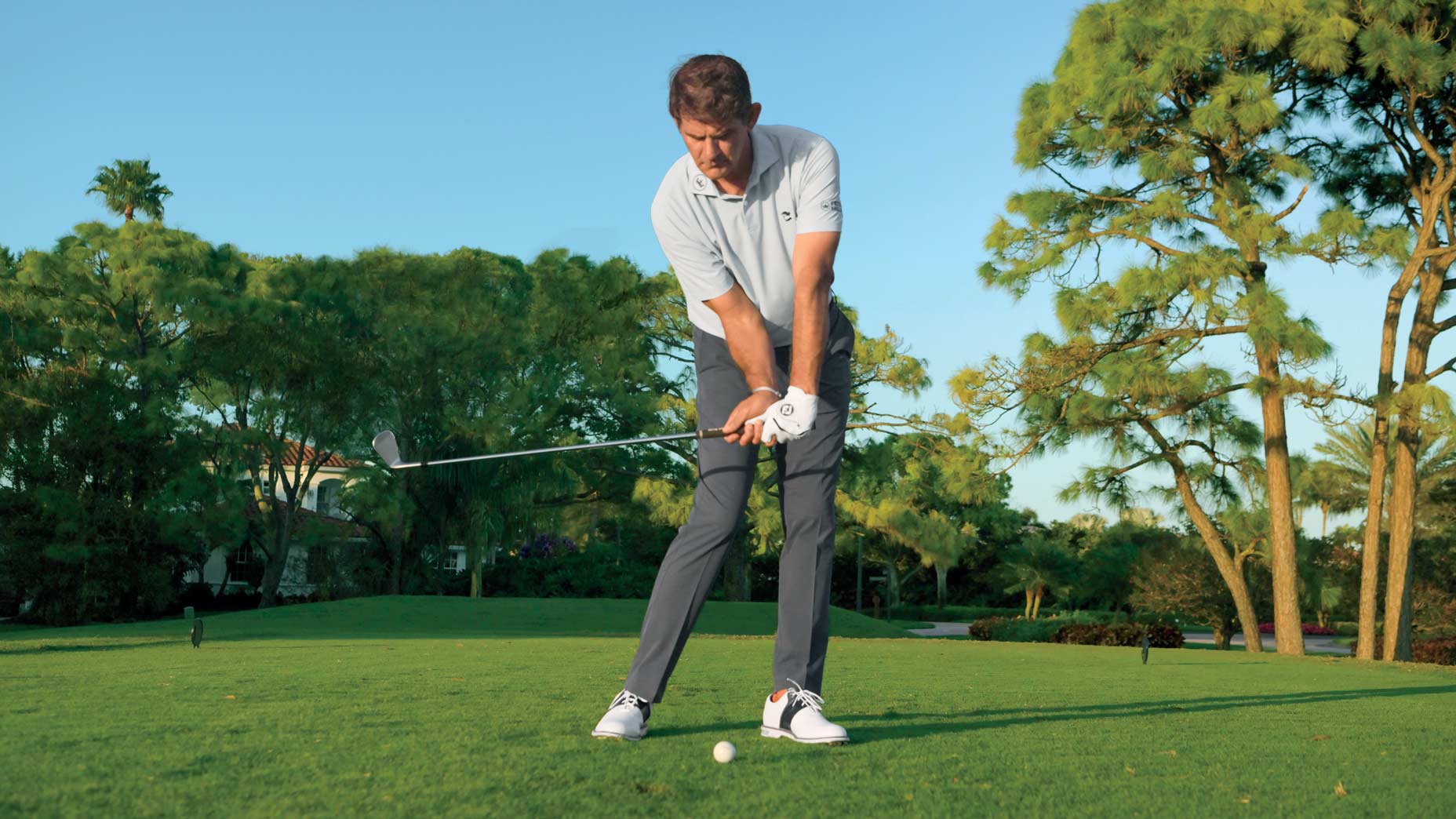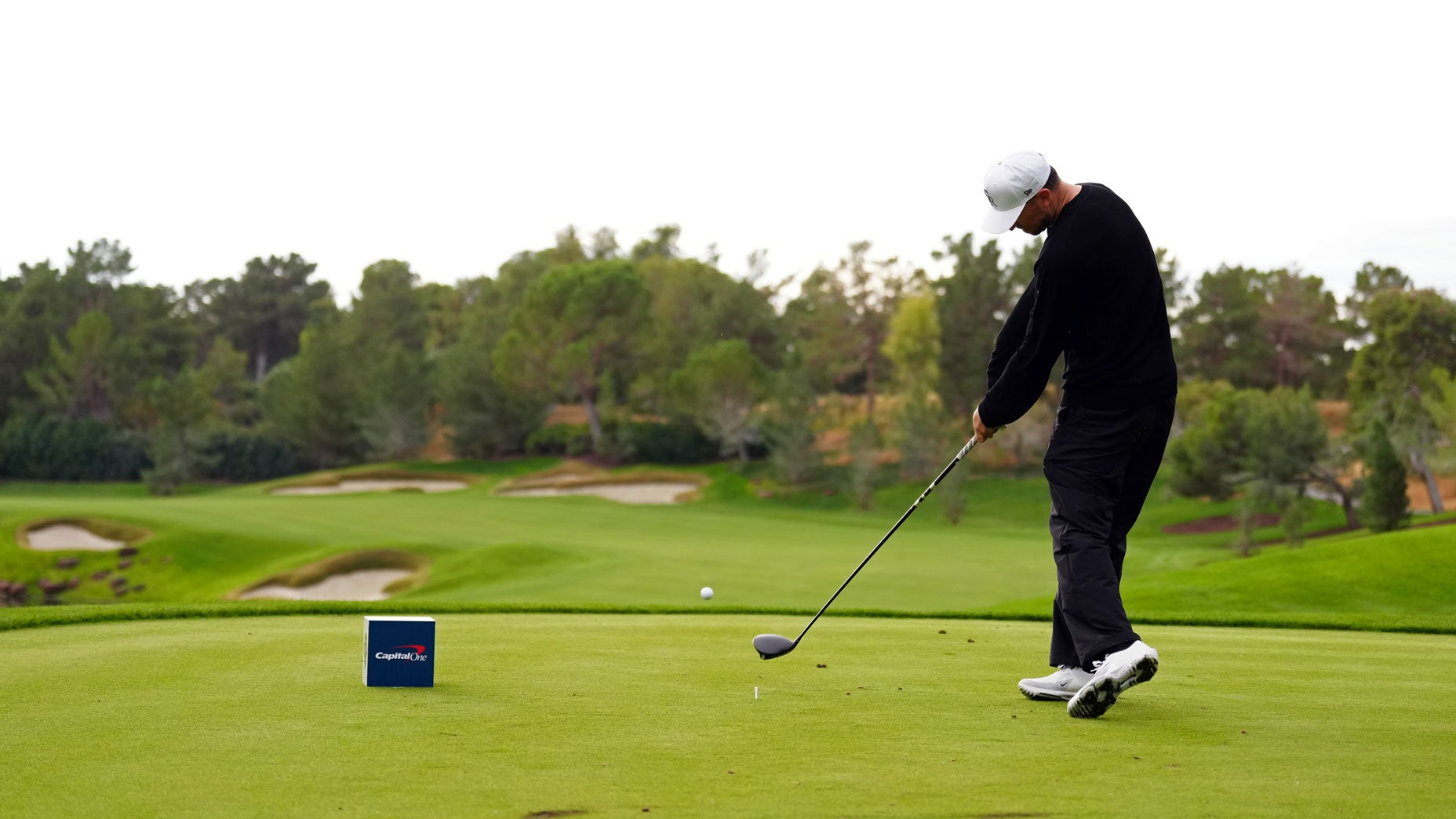Golf instruction is ever-evolving, but the best advice stands the test of time. In GOLF.com’s new series, Timeless Tips, we’re highlighting some of the greatest advice teachers and players have dispensed in the pages of GOLF Magazine. This week, we look back at a guide from our July 1989 issue on what part of the golf ball you should look at. For unlimited access to the full GOLF Magazine digital archive, join InsideGOLF today; you’ll enjoy $140 of value for only $39.99/year.
There’s a lot to think about when you step up to hit a golf shot. How you’re gripping the club. Which direction you’re aimed. Your ball position. And that’s all before you even take the club back.
Yes, the golf swing is a complicated endeavor. So complicated, in fact, that some of the simplest things don’t even cross your mind.
One of those simple things is what part of the ball you are looking at when you make a swing. Sure, most of us are looking at the ball, but which part of the ball? As it turns out, the part of the ball you should be looking at depends on the type of flaw you’re hoping to correct.
Back in 1989, GOLF Magazine published a guide on just that. Read on below for some tips of which part of the ball you should be looking at during the swing.
Which part of the ball should you look at?
You’ve heard this line over and over: “Keep your eye on the ball!” But what part of the ball? By zeroing in on specific sections, you can cure faults and improve shotmaking. A few examples follow.
Cure fats and tops
If you’re hitting the ball fat (the clubhead hits the turf behind the ball), try focusing on the front of the ball. This helps keep your hands slightly higher through impact, so you strike the back of the ball cleanly.
The opposite of a fat shot is a top — when the leading edge of the club hits at or above the ball’s equator; a closely related fault is a “blade,” caused by the leading edge hitting just below the equator. To cure both faults, focus on the back of the ball only. It will help force you to hit downward properly, getting the clubface fully on the ball.
Cure hooks and slices
A chronic hook is a sign of an inside-out swing path. To alleviate this, imagine the ball is split into quarters, then focus on striking the outer-rear quadrant with the club. This encourages an outside-in downswing.
Slicing (the most common of the two shots) is a sign of an outside-in swing path. To get on a better track from slightly inside, focus on hitting the inner-rear quadrant of the ball.
Add more distance
Maximum distance off the tee depends on solid club-to-ball contact. Sweeping the clubhead under the ball or chopping down on it results in a high, short, “skied” shot.
To help prevent this, imagine a nail sticking straight out of the back of the ball. Try to pound the nail squarely in with the clubface. This encourages a flat, level clubhead approach and good extension through impact. The result is a straighter, longer drive.
